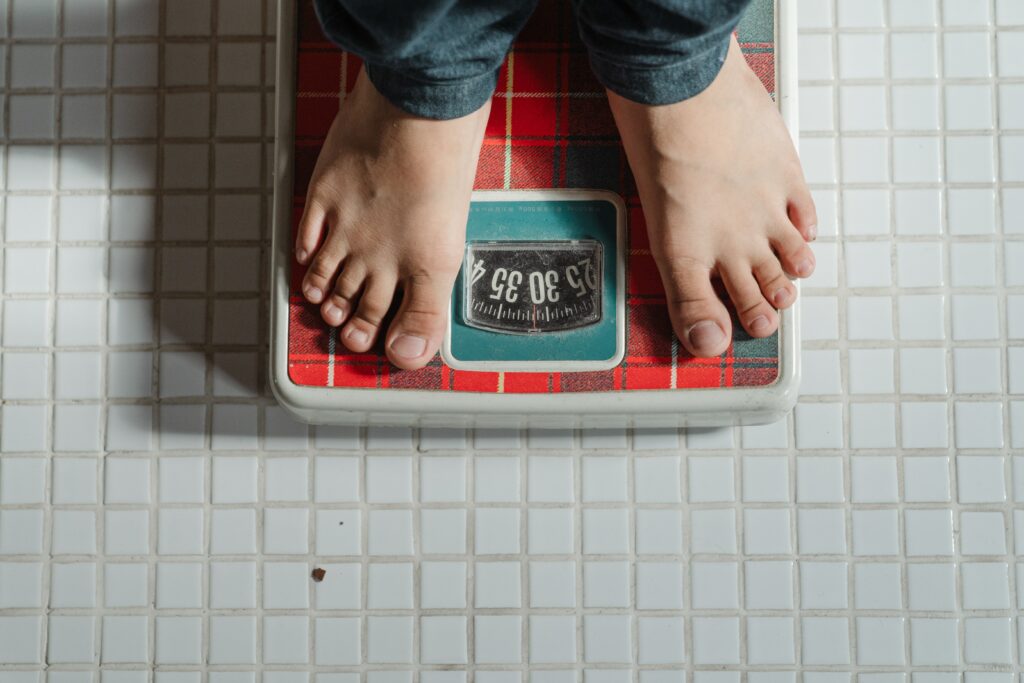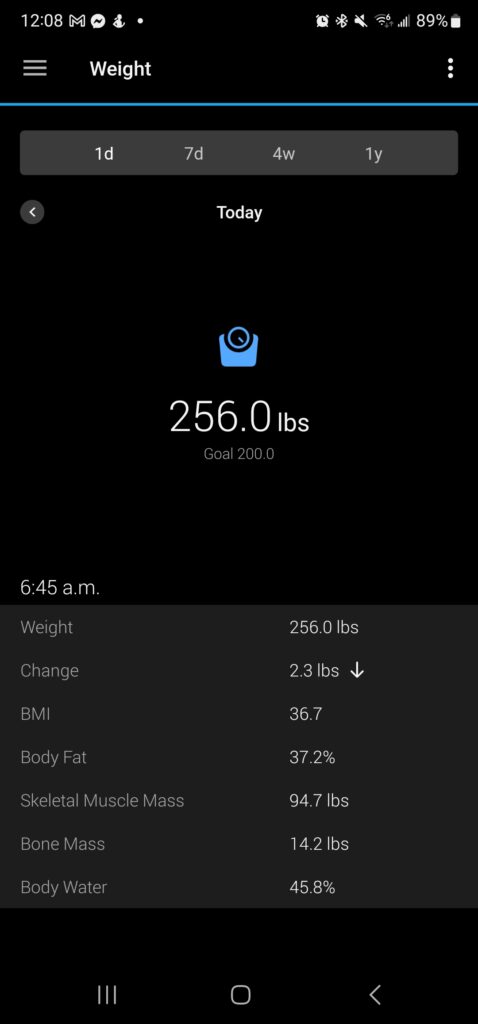This week:
This week (January 31st to Feb 7th) has been a bit light on the scheduled workouts. The NHL has had the week off due to the All-Star events happening in South Florida. I’ve still been getting my after class workouts in on Mondays and Thursdays, but I am not expecting as much of a change this week. My focus for this post is to talk about the technology that I use daily to track my progress. In particular, my Garmin Index smart scale, my Galaxy Watch 4, and my Samsung Galaxy smartphone.
Garmin Index 1

Stepping onto a scale when you’re heavy is never fun. You know that the number is higher than you would like, and you’re destined to feel defeated by the combination of digits that you see. But total weight does not tell the whole story when it comes to one’s fitness. That’s why I hate the Body Mass Index, and that’s why I use a smart scale at home. My Garmin Index smart scale is getting old, as I bought it in 2017, but it is still a mostly reliable way to track not just my weight, but my body composition. I am starting to notice moving it half an inch can result in a lower/higher measurement, so I think it needs replacing soon.

I may weigh 256 as I get started on writing this post, but it is comforting to know over 100 pounds is bone and muscle. With just BMI, all I know is that my weight for my age and height means I am obese, and that I used to be pushing morbid obesity. The Garmin Index uses what’s called Bioelectrical Impedance Analysis (BIA) to determine these numbers. Essentially, the scale is sending electrical pulses through my body as I stand on it, and gathers this information based on the composition of my body. Muscle impedes the electrical pulses differently than body fat or bone. For more details about BIA, check out VeryWellFit’s article Bioelectrical Impedance Analysis (BIA): use a BIA scale to meet fitness and weight loss goals.
Samsung Galaxy Watch 4
Similarly, my Galaxy Watch 4 has BIA tracking capabilities. However, I’ve noticed a discrepancy between the scale measurements and the watch measurements. My watch detects around 89-90lbs of skeletal muscle, while the smart scale detects around 95lbs. For my weekly weigh-ins, I have been defaulting to the watch measurements even though I feel the scale would be a bit more accurate. This is due mainly because the watch measurements get uploaded to my phone automatically, and I prefer the Samsung Health app to the Garmin Connect app.
In addition to BIA, the watch tracks a number of different metrics: steps and daily activity, sleep time and quality, stress, blood pressure, ECG readings, heart rate, workouts, and can track food and water intake with manual inputs. Below is a five-minute video covering 5 of the everyday health features of the Galaxy Watch 4!
Samsung Galaxy S22
There are a variety of uses for a quality smartphone when it comes to health and fitness. The Samsung Health app connects to my watch, and automatically tracks my workouts, steps, BIA measurements, sleep schedule, etc in an easy to understand format that quickly shows your trends over a period of time. (Below is a screen recording showing some of the different aspects of the Samsung Health app. I had difficulties in resizing the video, so please open it into full screen for the best viewing.)
For more great Free Fitness Apps, check out Boomfit’s article on 9 of the best free apps!
Weekly Weigh-In
Last week, my measurements were:
Weight: 256.6lbs/116.4kg ( ↓ 2.4lbs)
BMI: 36.8 ( ↓ 0.4)
Fat Mass: 90.2lbs ( ↓ 2.6lbs)
Body Fat %: 35.2% ( ↓ 0.6%)
Skeletal Muscle: 89.8lbs ( ↑ 0.2lbs)
This week, I measured:
Weight: 257.0lbs/116.6kg ( ↑ 1.3lbs)
BMI: 36.9 ( ↑ 0.1)
Fat Mass: 91.8lbs ( ↑ 1.6lbs)
Body Fat %: 35.7% ( ↑ 0.5%)
Skeletal Muscle: 89.0lbs ( ↓ 0.8lbs)